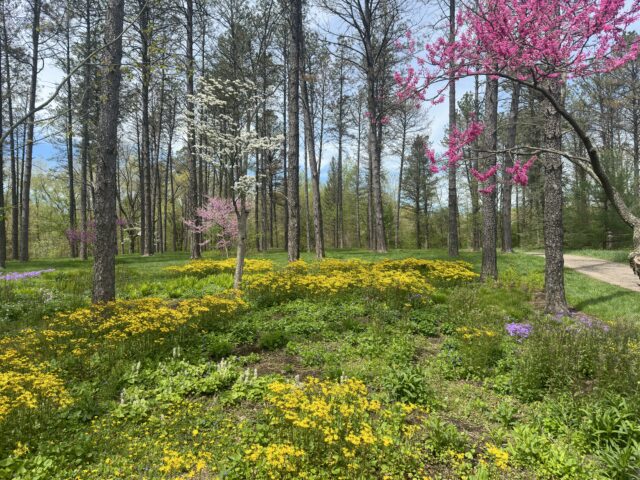
At the Holden Arboretum, out behind the Long Science Center, there’s an orchard. But you won’t find any fruit trees there, they’re all ash. In fact, each of these ash is a genetic replica of an ash somewhere out in nature. They’re clones.
These clones are from ash trees growing out in the wild that may very well be (and hopefully are) still alive today. The source trees are called lingering ash, and they’re the last of the mature ash trees growing in nature that haven’t succumbed to the emerald ash borer, which has killed millions and millions of trees across our region.
These clones, and their wild counterparts, have an important mission: Serve as the basis for breeding efforts to develop pest-resistant ash trees that foresters and ecologists can use to replant our lost forests. It’s no small ask.
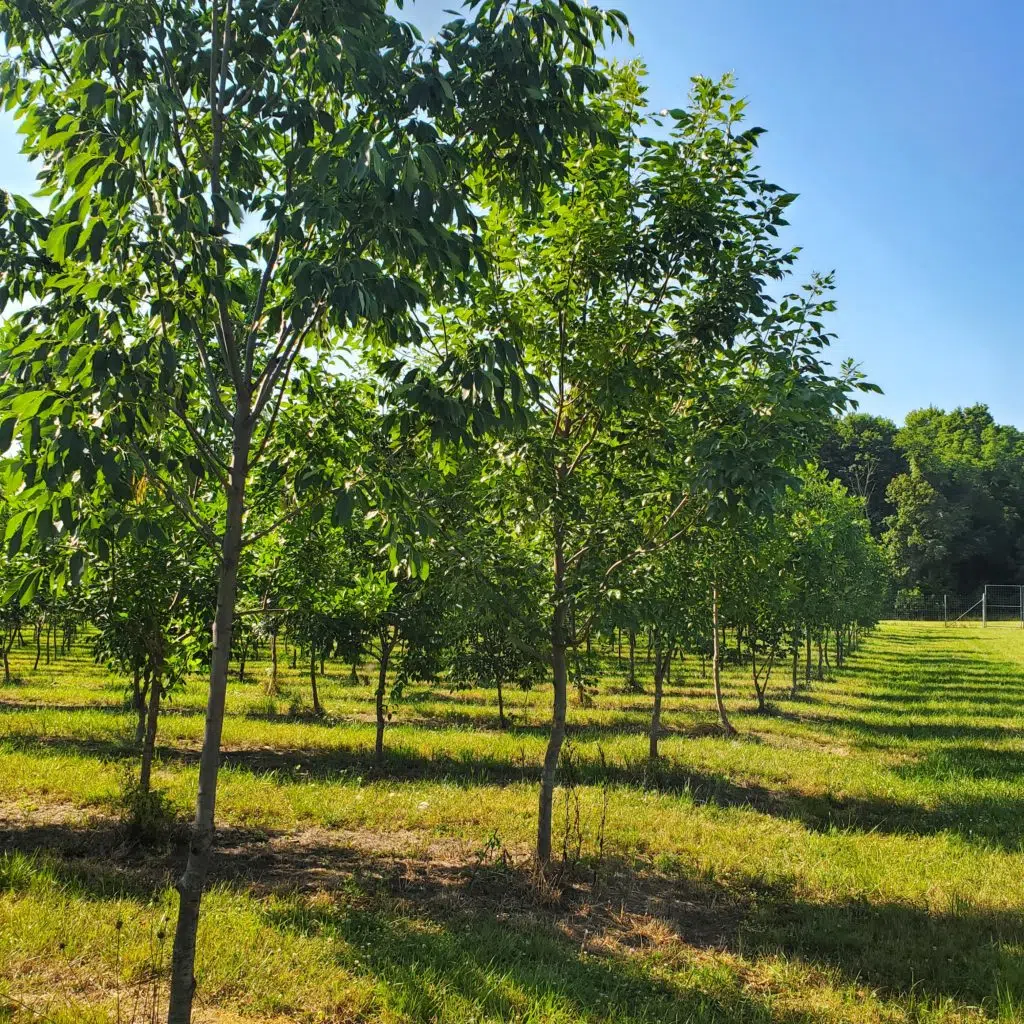
Planting an Ash Clone Orchard
Researchers at Holden Forests & Gardens collaborated with the U.S. Forest Service to plant these clones at the Ellen Corning Long and T. Dixon Long Center for Plant and Environmental Science in 2015. The trees weren’t grown from seeds, rather were grafted, meaning branch samples were field collected and brought back and spliced onto healthy root stocks. The Forest Service did the grafting, and Holden set aside the land for long term tree growth and care.
The Forest Service had already tested the trees for resistance to the emerald ash borer, and has found a wide variety of resistance levels as well as strategies to fight the bugs. At the low end, some trees demonstrated that they were able to slow the beetle’s growth. And at the high end, some trees had as much resistance to the pests as do Asian ash trees — whose resistance is why the emerald ash borer doesn’t decimate forests in its native northeast Asia.
The trees were only a few years old when they were tested, but researchers are also interested to learn about how these trees — and their pest resistance — fare in the long run. This is especially important since the emerald ash borer typically prefers larger ash trees, since they provide better bark for egg laying and more food for their offspring. That’s where the orchard comes in: It allows for researchers to check back in over time to assess the trees as they get older.
Holden researchers monitor how many emerald ash borers are living in and around the orchard each year, to track how their abundance changes over time. We do this by putting out what are called panel traps, which are covered in sticky glue and a scent that the beetles are attracted to. We’ve continued to see the beetles every year, although the amounts fluctuate. And after seven years since we planted the orchard of 625 ash, we’ve only ever found one tree with an exit hole — a sign of emerald ash borer infestation. One!
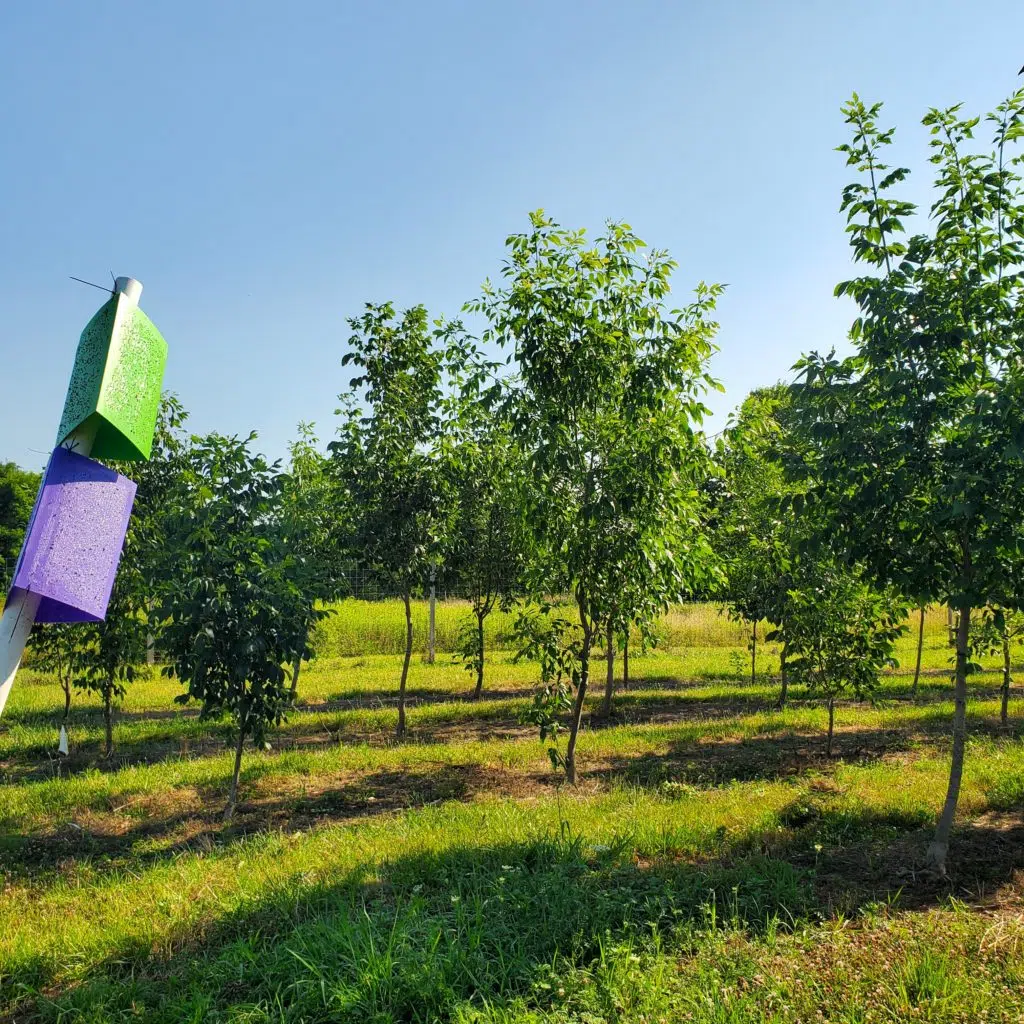
We expect that over the long term, some of the trees will eventually die from emerald ash borer infestation. But we’ll collect seed from those that survive, and our test orchard will become a seed orchard, supplying seeds for restoration plantings across the region. The seeds from this orchard should even be more resistant to the ash borer than the ash in the woods since these seeds are made from resistant trees wind pollinating with each other.
Seeds for the Future
This is the first year any of the trees have made seeds, but it will take a few years more before the orchard is mature enough to be producing fully functional seeds. We’re considering this year a practice run in seed-making.
This ash orchard and tree breeding program is a part of a larger, region-wide effort to help sustain forest health for all our trees, not just ash. The Great Lakes Basin Forest Health Collaborative is currently working on beech and hemlock, two important tree species that are also facing widespread pest attacks, in addition to ash. The GLBFHC is a partnership of conservation organizations, researchers, agencies, and even individuals who are interested in assisting with breeding trees for resistance to invasive plants and diseases. Right now, the GLBFHC is working on replicating ash clone orchards like Holden’s in other locations across the region with each location’s own local lingering ash.
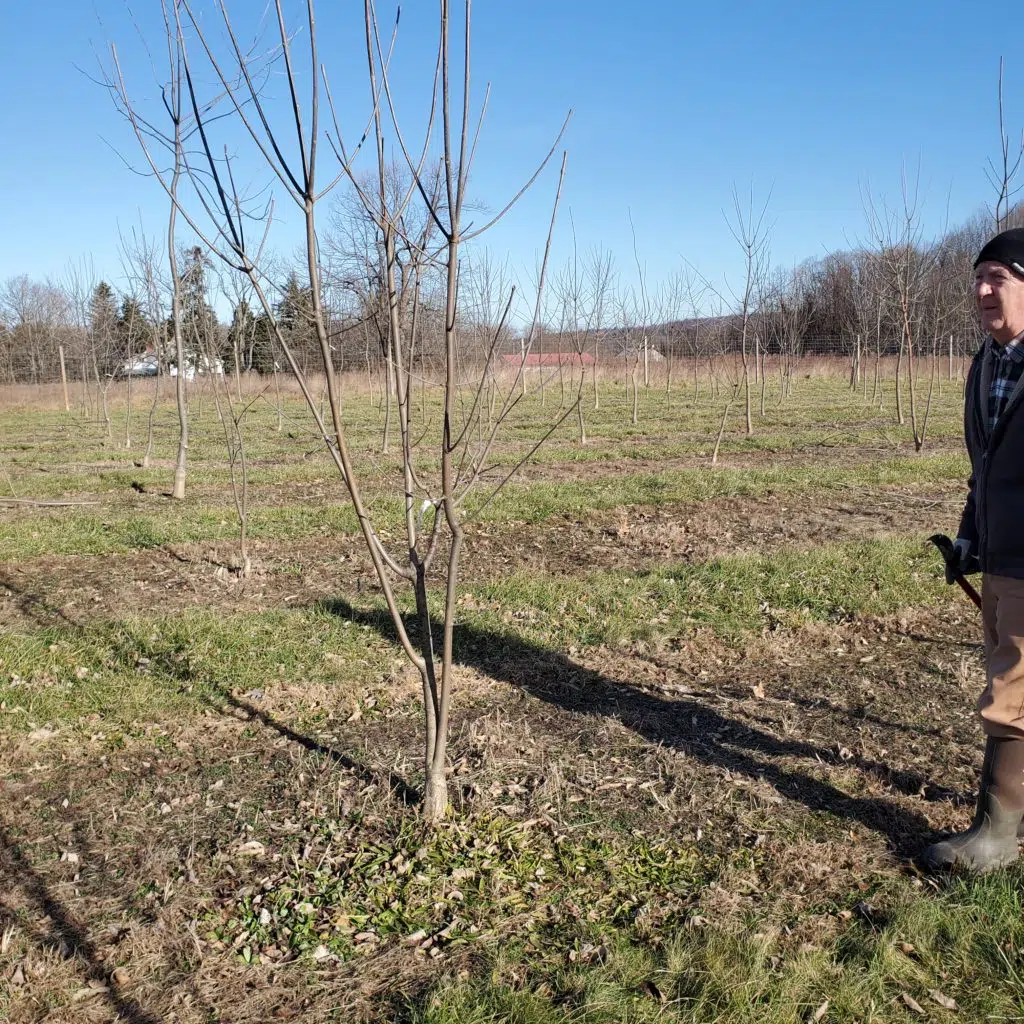
How to Get Involved
Maintaining an orchard of 625 special trees is no easy feat. Researchers from Holden and the U.S. Forest Service have done so much work over the years to make this happen, but they didn’t act alone — they had help, much of which came from Holden volunteers.
Recently, we’ve been very fortunate to have volunteers to help maintain the ash orchard with pruning and data collection in the fall and winter. (We’re extra grateful to anyone that comes out on the colder days!) There’s also plenty to be done in summer, collecting data in the orchard to assess canopy health. Holden also regularly hosts summer interns, who can use the time to practice collecting data and to experience participating in a research project that will have far-reaching impact.
Holden is always looking for more volunteers, but you can also help our ash research right from your own neck of the woods. The next steps of our region-wide initiatives require finding more lingering ash to test for resistance so we can expand our tree breeding efforts.
Lingering ash are mature trees growing in natural areas where the emerald ash borers have already killed most of the trees. To consider a tree for testing, it needs to meet the following criteria:
- The tree must be growing naturally in a forested area. In other words, it can’t be growing on your street or in your backyard — these trees are typically nursery cultivars that we’ve already tested for resistance. (And yes, some nursery trees have been shown to survive emerald ash borers in low amounts!)
- The tree must be greater than 8 inches in diameter (DBH, or diameter at breast height, is a standard measure used by foresters. A workaround is that it’s about 25 inches circumference, about 4.5 feet off the ground).
- It must be at least two years since your county has been considered to be under “high” emerald ash borer populations or having heavy ash mortality. If you don’t know, don’t worry — we can figure this part out for you if you submit a tree for consideration.
If you find a mature, living ash tree that meets these criteria, please tell us! You can send information about your tree (photos, size, location) over email (rkappler@holdenfg.org) or through the Treesnap app, available for devices or online at TreeSnap.org.
Together, we can bring these important trees back to our forests.
—Want to stay up-to-date on the latest forest health news and research? Subscribe to the Great Lakes Basin Forest Health Collaborative email newsletter,
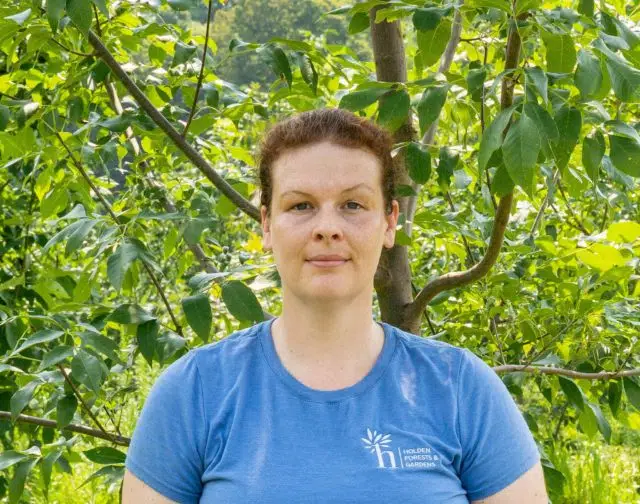
Rachel Kappler, PhD
Great Lakes Basin Forest Health Collaborative (GLB FHC) Coordinator
Rachel Kappler is the coordinator for partners of the Great Lakes Basin Forest Health Collaborative. She helps facilitate partners tree activities for pest-resistance breeding in current priority species, ash, American beech, American elm and eastern hemlock. She also hosts workshops, webinars, and training for partners to help them achieve their forest health goals.




